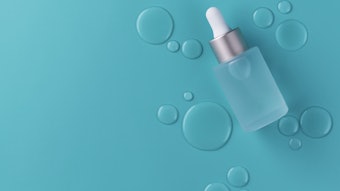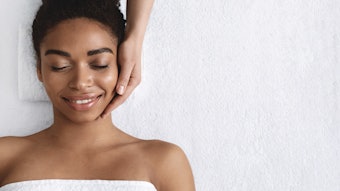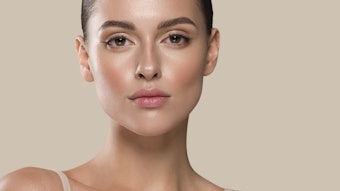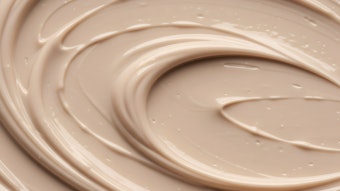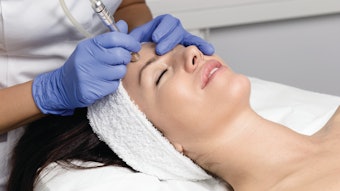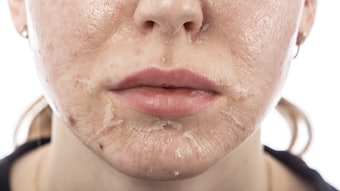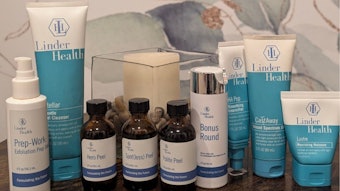Although acne is oftentimes as much a part of being a teenager as dating and Friday night football games, a new study examining the prevalence of acne in adults age 20 and older confirms that a significant proportion of adults continue to be plagued by acne well beyond the teenage years. In particular, women experience acne at higher rates than their male counterparts across all age groups 20 years and older.
In the study entitled, “The prevalence of acne in adults 20 years and older,” published online in the Journal of the American Academy of Dermatology, dermatologist Julie C. Harper, MD, FAAD, associate professor of dermatology at the University of Alabama in Birmingham, Ala., and her colleagues at the University of Alabama at Birmingham School of Medicine, surveyed a random sample of men and women aged 20 and older to determine the prevalence of persistent acne that continued after adolescence or new adult-onset acne.
“Although acne is one of the most common skin diseases, there is a general misconception that it only affects teenagers,” explained Harper. “As dermatologists, we treat acne patients of all ages–from those who have experienced acne since they were teenagers to others who have developed the condition for the first time as adults. Our study set out to determine just how common acne is among adult men and women.” A total of 1,013 men and women aged 20 years and older at the University of Alabama at Birmingham campus and medical complex were asked to complete a one-page questionnaire designed to evaluate the prevalence of acne in adults across various age groups. Survey questions gauged whether the participant had ever had acne or pimples, including during their teens or later in life (in their 20s, 30s, 40s, and 50s or older). The survey also asked participants to judge whether their acne had become better, worse or stayed the same since their teenage years.
When asked whether they had ever had a pimple or acne, the vast majority (73.3%) of participants responded that at one time or another they had dealt with acne. The majority also reported that they had experienced acne as teenagers, with the number of men and women affected by the condition nearly identical (68.5% of male participants and 66.8% of female participants).
Interestingly, the survey found that for every age group following the teenage group, the reported
incidence of acne was significantly higher among women than men. Specifically,
- During their 20s, 50.9% of women and 42.5% of men reported experiencing acne.
- During their 30s, 35.2% of women and 20.1% of men reported experiencing acne.
- During their 40s, 26.3% of women and 12% of men reported experiencing acne.
- During their 50s or older, 15.3% of women and 7.3% of men reported experiencing acne.
A separate section of the survey, which included questions assessing aspects of acne specific to women, asked female participants to note changes in acne around the time of their menstrual period, their pre-menopausal or post-menopausal status, and the effect of any treatments for symptoms of menopause on acne. Of the pre-menopausal women surveyed, 62.2% noted that their acne gets worse around the time of menstruation. In addition, of the 86 women who reported using either hormone replacement therapy or over-the-counter medications for the side effects of menopause, nine women (10.5%) reported improvement in their acne with the use of these therapies. However, 75 of the women (87.2%) reported no change with these menopausal therapies, and two women (2.3%) reported that their acne symptoms worsened.
“Our findings demonstrate that acne is a persistent problem for people of all ages, but clearly women seem to be affected by this medical condition more than men when we examined the 20-plus age groups,” said Harper. “Research examining the role hormones play in the development of acne may hold the key to explaining why more adult women are affected by acne and could lead to future treatments to control this condition.”
Harper added that the majority of study participants reported that the severity of their acne improved after their teenage years, which is consistent with previous studies suggesting that post-adolescent acne is generally mild or moderate. For example, 63% of men and 53.3% of women stated that their acne improved after their teenage years, while only 3.6% of men and 13.3% of women reported that their acne worsened post-adolescence.
“Despite the fact that adult acne tends to be generally milder than teenage acne, this common medical condition can have a significant impact on a person’s overall quality of life – regardless of when it occurs,” explained Harper. “Involving a dermatologist in the diagnosis and treatment of acne is vital to managing this difficult condition.”
The American Academy of Dermatology recommends the following tips for the proper care and treatment of acne:
- To prevent scars, do not pop, squeeze or pick at acne; seek treatment early for acne that does not respond to over-the-counter medications.
- Gently wash affected areas twice a day with mild soap and warm water. Vigorous washing and scrubbing can irritate your skin and make acne worse.
- Use “noncomedogenic” (does not clog pores) cosmetics and toiletries.
- Use oil-free cosmetics and sunscreens.
- Avoid alcohol-based astringents, which strip your skin of natural moisture.
- Shampoo hair often, daily if it is oily, though African-Americans may prefer to wash it weekly.
- Use medication as directed and allow enough time for acne products to take effect.
